Representation of a shaman with offerings
Ecuador
Culture Jama-Coaque 500 BC – 500 AD.
°°° Price can be reasonably negotiated °°°
The subject is represented seated, legs short but powerful, arms folded, pressed against the body, hands presenting offerings. A long loincloth covers the shaman almost entirely, the fabric receiving circular patterns materialized by the pastillage technique. The face has wide open eyes framing an eagle's beaked nose, the latter decorated with a large nariguera (nose ornament) in the shape of a ball, the chin pierced with a large triangular labret (tembleta). The character has ears decorated with large circular tambas (earrings), the neck decorated with a necklace with a curved pectoral. The hairstyle is characterized by a double row of truncated conical elements evoking feathers, the latter covered by a headdress falling on the shoulders and covered with circular patterns like the loincloth, the top of the headdress presenting a shuttle-shaped element. The back of the skull pierced with an evacuation hole.
The Jama-Coaque culture developed on the central coast of Ecuador, south of La Tolita. Like the Bahía and La Tolita cultures, it is the product of the original development of the Chorrera culture (1000 BC). Particularly renowned for its elegant ceramic figurines with stereotypical features, these are differentiated by the variety and richness of their ornamentation. Close to the Tumaco-Tolita culture, it nevertheless differs in its approach to ceramics through a combination of incision relief. Likewise, a significant part of ceramic production is ceremonial in nature and often features high-ranking figures.
Ocher ceramic, traces of manganese oxides
23 x 13 cm
Restorations, minor accidents
Former sale Loudmer, Paris, Drouot 1986
Follow us on facebook: https://www.facebook.com/profile.php?id=61556625114407
Contact us: culturesetcivilisations@orange.fr



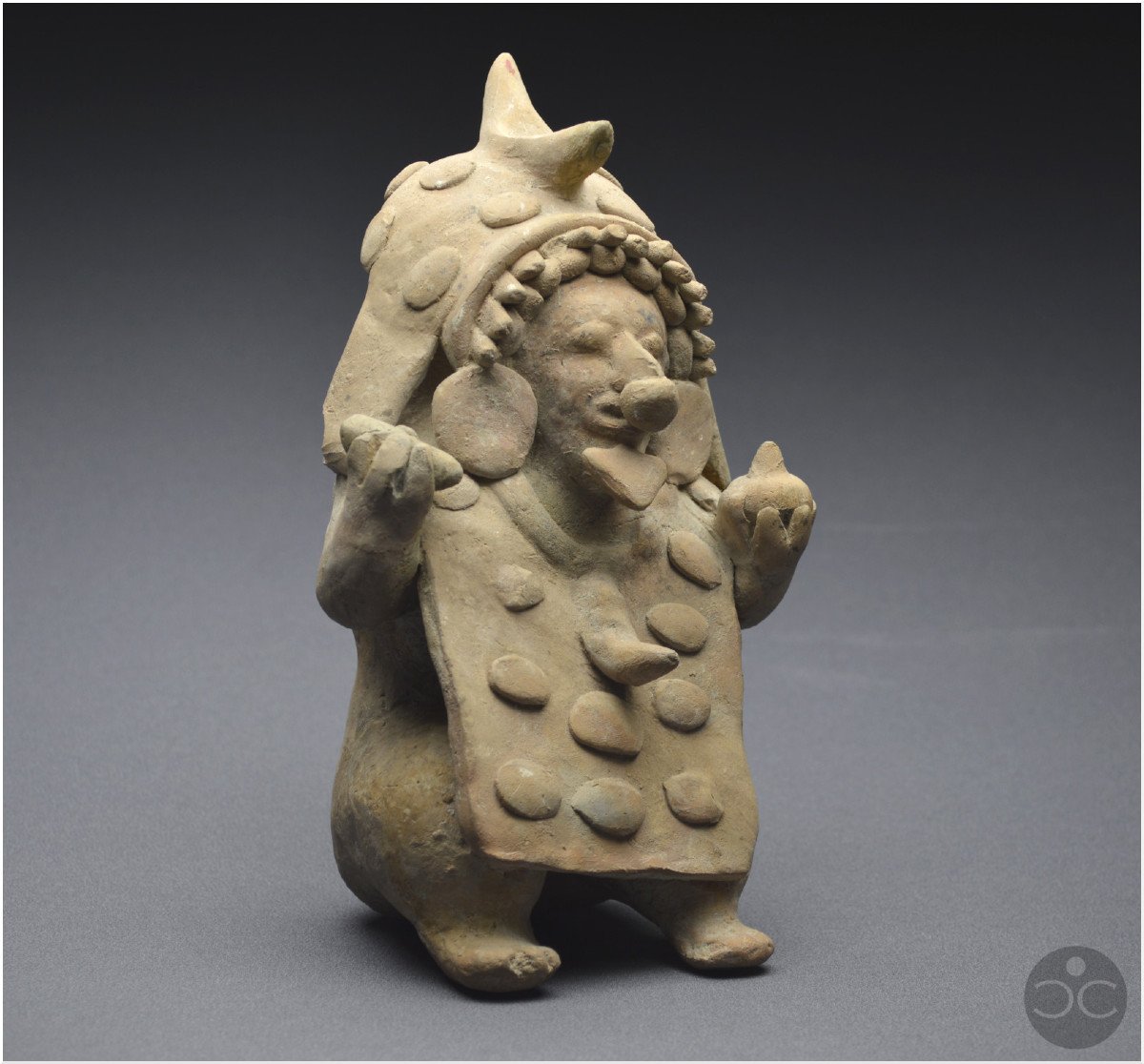
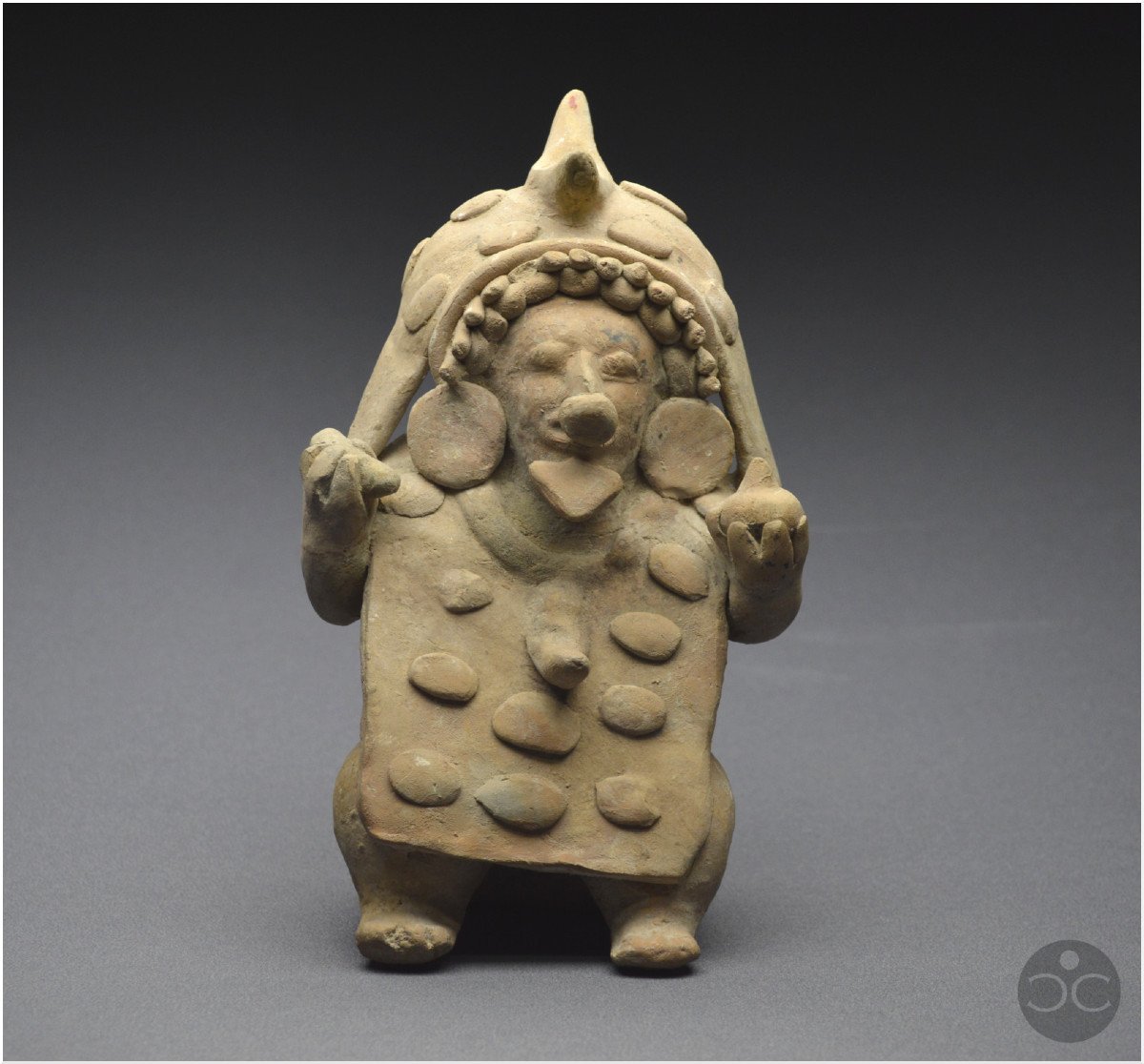





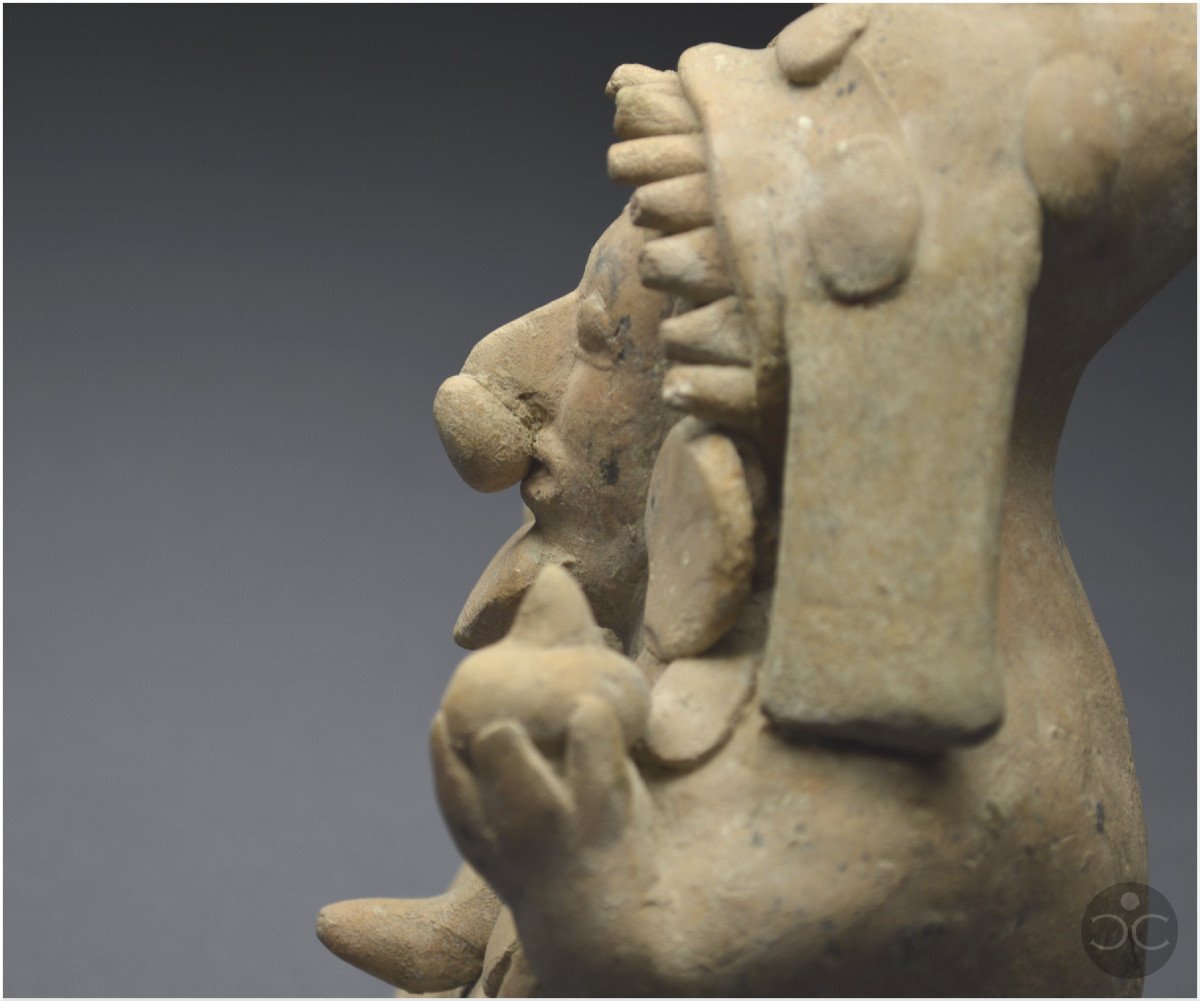


















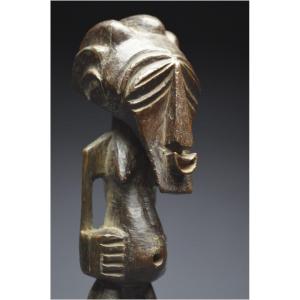
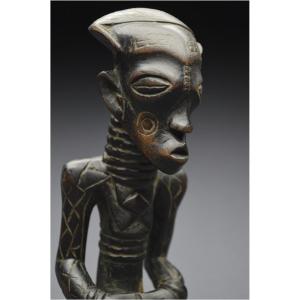

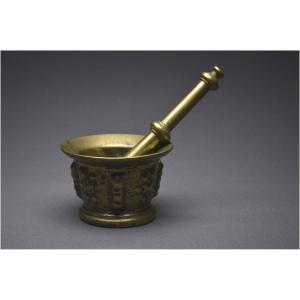




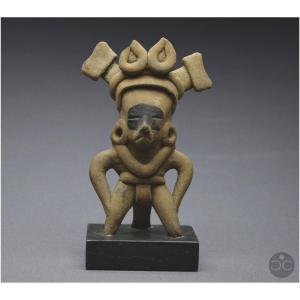
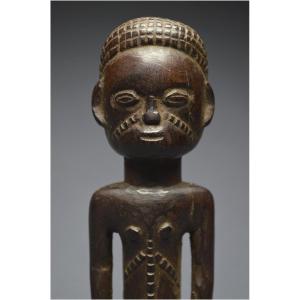
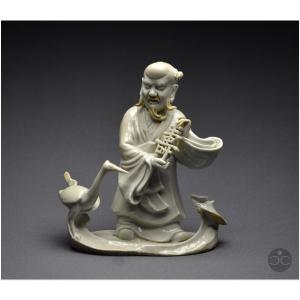

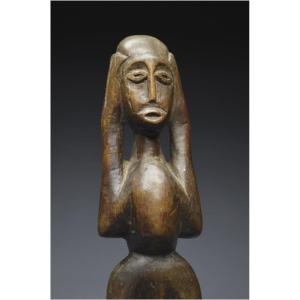








 Le Magazine de PROANTIC
Le Magazine de PROANTIC TRÉSORS Magazine
TRÉSORS Magazine Rivista Artiquariato
Rivista Artiquariato